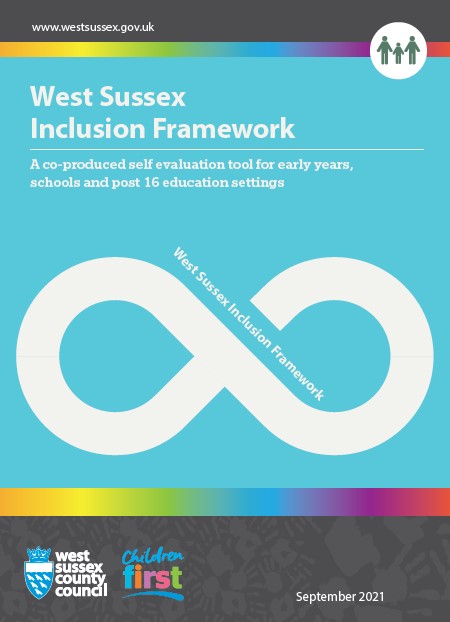
West Sussex Inclusion Framework September 2021 doc
Is there evidence that…
- Data is effectively used to inform future planning and improving outcomes for all children and young people (CYP).
- Assessments are used to identify needs and appropriate intervention groups and the effectiveness of these interventions is reviewed and adjusted according to outcomes. The school is mindful about the time spent out of the classroom and promotes inclusion within class as much as possible.
- CYP who are not making expected rates of progress or engaging in the full range of provision are targeted so that they make accelerated progress.
Discussion prompts / evidence of impact
- Systems are in place for regularly assessing progress of CYP in key aspects of learning and engagement and personal development. The school identifies CYP who are at risk of underachieving and implements plans to rapidly and effectively address this. CYP assessment includes reflection of teaching and leads to modification of learning activities.
- There is a clear system and up to date record of attainment and progress for all groups within the school. There is evidence of data being analysed in relation to key groups and actions being identified and taken. Data, alongside other monitoring, is used to identify the areas for improvement and to set targets and milestones to evaluate the impact of the actions within the School Improvement Plan. Leaders’ analysis of assessment is used proficiently to inform curriculum design and delivery.
- There is evidence of teacher assessments being used to contribute to target setting for all disadvantaged groups e.g. Personal Learning Plan (PLP), Pastoral Support Plan (PSP), Personal Education Plans (PEP). The impact of these plans is routinely evaluated, informed by the outcomes of other monitoring activities.
- The school collects additional assessment data that measures progress holistically. This could include assessments such as The Boxall Profile Assessment, Social Use of Language Programme, Thrive, social communication and interaction checklists or resilience frameworks. Information from these assessments is used to inform curriculum design and teaching.
- Evidence of detailed analysis of groups across the school population is undertaken, including overlapping groups such as SEND, those with additional needs and at risk of disadvantage – this leads to tailored actions to effectively support all CYP.
- The school has systems for monitoring teaching and learning and the impact of the curriculum, including teachers’ planning, CYP’s work and attitudes to learning within certain classes/lessons. This monitoring includes regular focus on the progress being made by CYP. The systems are transparent and are understood by staff who value the feedback this provides.
- The school has developed systems to enable CYP to provide feedback on their learning and the extent to which their lessons help them to learn.
- CYP have an age / developmentally appropriate understanding of the process of assessment and ultimately of their needs. They feel that they are being supported to overcome barriers to learning / achievement.
- Additional support within classrooms is used flexibly and is focused on facilitating independent learning.
- Regular and frequent (at least termly) CYP progress meetings enable the school to quickly provide additional support for those who are in danger of underachieving.
- All CYP know their learning targets/personal development targets.
- CYP and parents have regular opportunities to meet with and provide feedback to the governing body and senior leadership team on aspects of the school’s policy and provision, for example through a parent forum, or CYP representatives.
Last updated 16 August 2021
 Tools for Schools
Tools for Schools